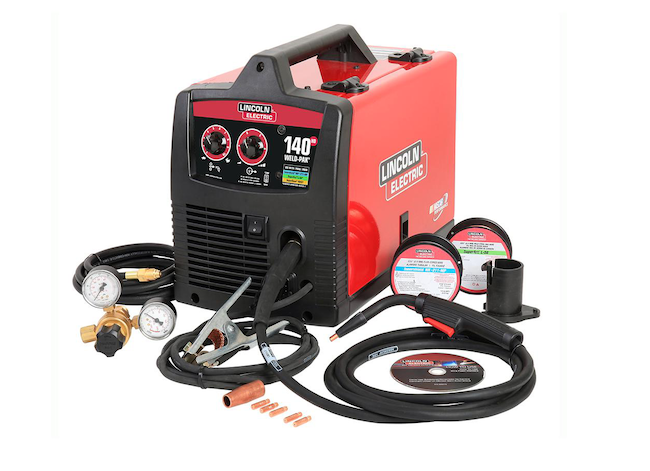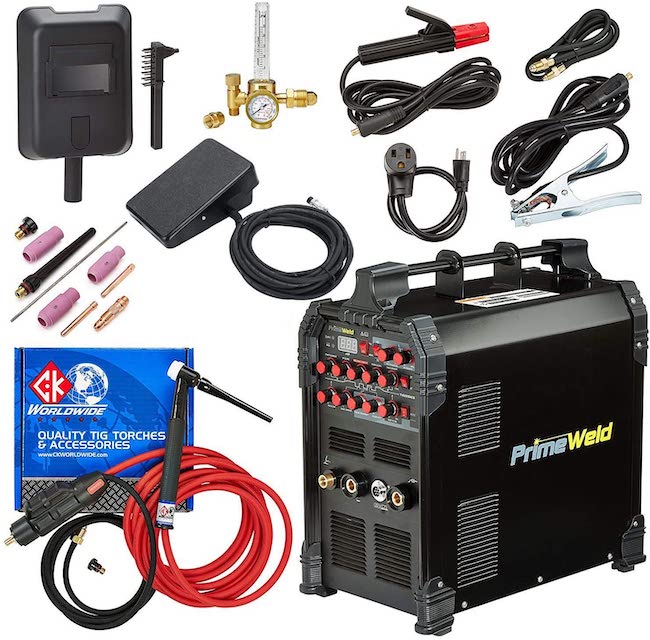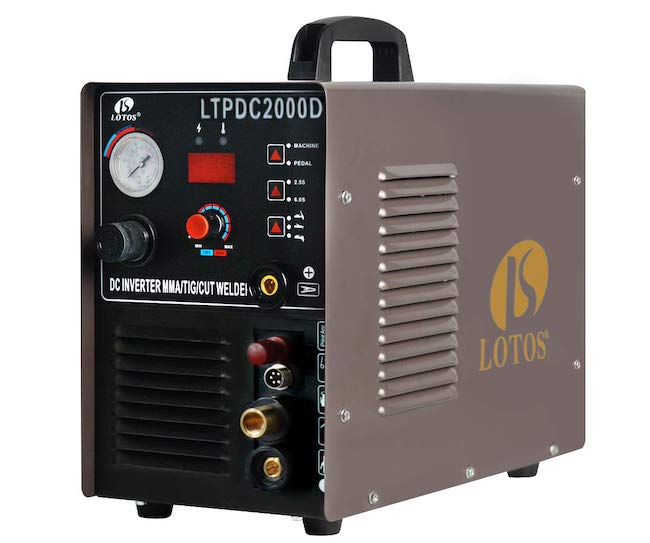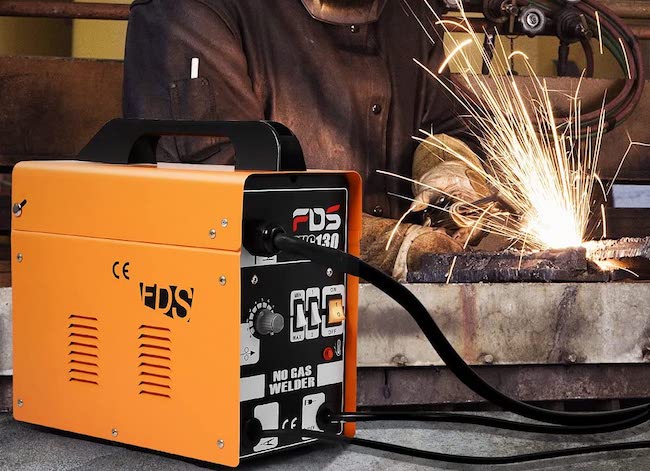

We may earn revenue from the products available on this page and participate in affiliate programs. Learn More ›
Welding can be an absorbing hobby on its own, or it can be a useful skill for DIYers, vehicle restorers, home engineers, craftspeople, and artists. Unfortunately, not one type of welding suits all tasks. The various different types of welders can lead to confusion both for those just starting out and for those looking to improve their skills or upgrade their equipment.
If you are wondering what are the different types of welding and the uses of welding types, keep reading. In this article we look at each of the four different types of welding that might appeal to DIY users, discuss their merits, and look at some of the best machines in each category.
1. Gas Metal Arc Welding – aka MIG Welding

MIG welding is undoubtedly the most popular of the welding types among DIY users, and is also popular with professionals. Welding wire is fed from a spool to the welding gun. Feed speed is variable, offering excellent control, and the welder can focus on the weld itself. It is the easiest of the welding techniques to learn, and beginners can soon produce consistently strong welds that need little work to clean up.
The only real disadvantage with MIG welding is that a supply of bottled gas is required to create a protective ‘shield’ around the weld, and to prevent contamination. It’s not difficult to set up, but MIG welding is less portable than some alternatives.
Best For: General-purpose workshop welding of steel or aluminum.
Our Recommendation: Lincoln Electric Weld Pak 140 Amp – Get at The Home Depot for $649.00
Lincoln Electric is one of the leading brands for both DIY and professional welding equipment. This high-quality device combines ease-of-use for beginners with the power and precision demanded by more experienced users. It can produce two kinds of weld. In addition to efficient MIG welding, it also offers flux core capability (see Flux core welding below).
Related: How To: Age Metal
2. Gas Tungsten Arc Welding – aka TIG Welding

The main difference between MIG and TIG welding is the absence of the powered spool of welding wire. The weld is formed by a tungsten electrode, shielded by gas in the same way as MIG. A filler wire is often used, but ‘autogenous’ welds simply fuse two pieces of metal together.
TIG welding offers greater versatility. It can be used for steel, stainless steel, and aluminum, so called ‘soft’ metals like brass and copper, and more exotic materials like magnesium and titanium. Some TIG welding machines have a foot control, allowing precise adjustment of heat control. Skilled users can produce neat, high-quality welds in thick or thin materials with these steel welders.
However, working with gun, filler rod, torch, and possibly foot control at the same time makes TIG welding more difficult to master than MIG. It is also a much slower process. It is not recommended for beginners.
Best For: Precision welding of a wide variety of metals.
Our Recommendation: Primeweld TIG225X 225 Amp Welder – Get at Amazon for $825.00
TIG machines under $500 are available, but DIY welders with modest budgets would probably be better advised to invest in MIG. This powerful Primeweld machine has inverter technology that offers consistent and controllable power so users can take full advantage of TIG’s versatility. The comprehensive welding set comes with high-quality torch, foot pedal, gas regulator, and a basic mask.
Related: Solved! What’s the Best Paint for Metal Surfaces?
3. Shielded Metal Arc Welding – aka Stick Welding

Stick welding has been around since the late 19th century. Before MIG became affordable, it was many DIY users’ favorite welding method. Basically it melts a stick (rod) of metal into the joint. The rod contains the elements necessary for the shield, so a separate gas supply is not required, and it works well outdoors. It is often the type of welding machine recommended for welding cast iron, and is good with steel. It will weld dirty, rusty or painted surfaces. While it can be used for other metals, the high power generated makes it difficult to weld thin material.
Striking an arc (getting the weld started) can be challenging. The use of rods, rather than a continuous wire spool, means it’s a stop/start process. It also creates a lot of spatter (molten metal splashes) which make for an untidy weld that needs significant work if a neat finish is required. In essence, it’s quick and dirty ‘agricultural’ welding.
Best For: Dirty or rusty metal where neat welding is not especially important.
Our Recommendation: LOTOS LTPDC2000D Stick Welder, TIG Welder, and Plasma Cutter – Get at Amazon for $489.00
Lotos is a brand known for high-performance welding equipment at competitive prices. This model offers tremendous flexibility in that it provides both stick and TIG capabilities, and can be used as a plasma torch for metal cutting (a compressed air supply is required). There is focus on arc starting, which helps overcome one of stick welding’s drawbacks.
Related: After Testing the Best Angle Grinders, Our Favorite Automatically Adjusts Speed and Torque
4. Flux Cored Arc Welding

Flux core welding is much like MIG welding, with a spool that feeds wire into the weld. In fact a number of machines, like the Lincoln Electric above, offer both MIG and flux-core capabilities.
The difference is the wire itself, which has a flux around the outside. This is a solid until it is heated by contact with the weld, at which point it releases inert gas that creates a similar shield to MIG welding. However, it does not need the bottled gas, hose, and regulator. This makes it a much more portable solution. The shield is less affected by wind, making it a good choice for welding outdoors. Like stick welding, it will weld metals in poor condition, so little or no preparation is necessary.
The disadvantages are that the wire is more expensive, and spatter can be difficult to clean up. Additionally flux core welding offers rapid penetration that is great on thick material, but inexperienced users can burn right through the thin sheet.
Best For: Outdoor repairs and construction.
Our Recommendation: Goplus MIG 130 Welder – Get at Amazon for $149.99
The budget-friendly Goplus MIG 130 offers beginners everything they need to get started, including the gasless welder, a basic mask, brush/chipping hammer, and a spool of wire. It is a lightweight and versatile introduction to flux core welding, though more experienced users might want more power.
